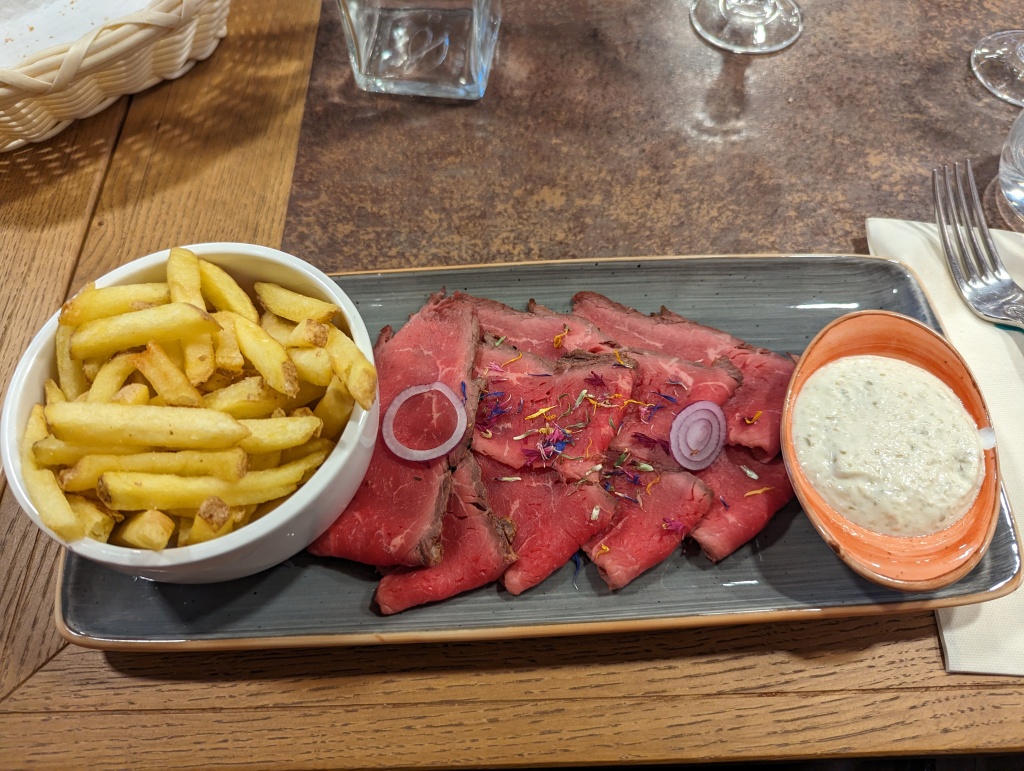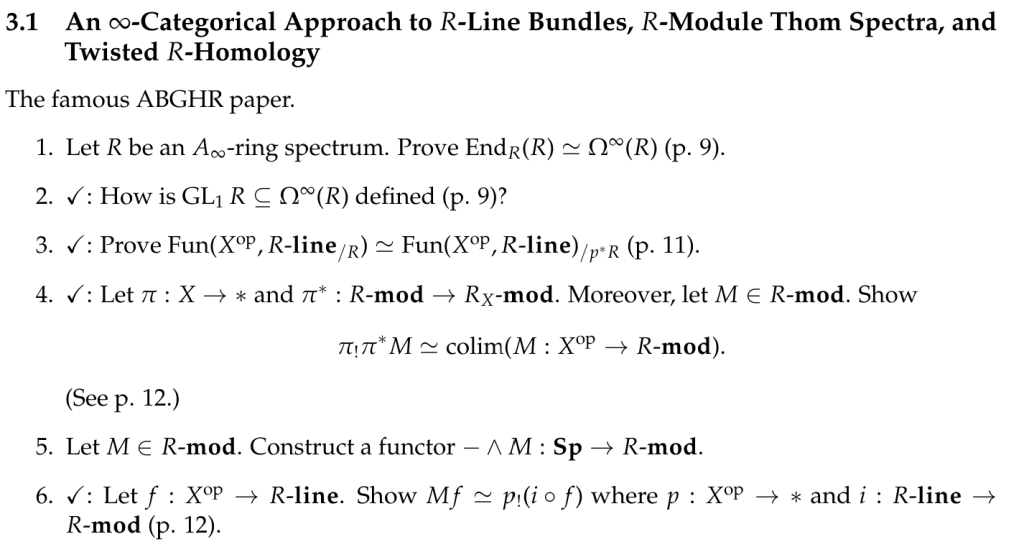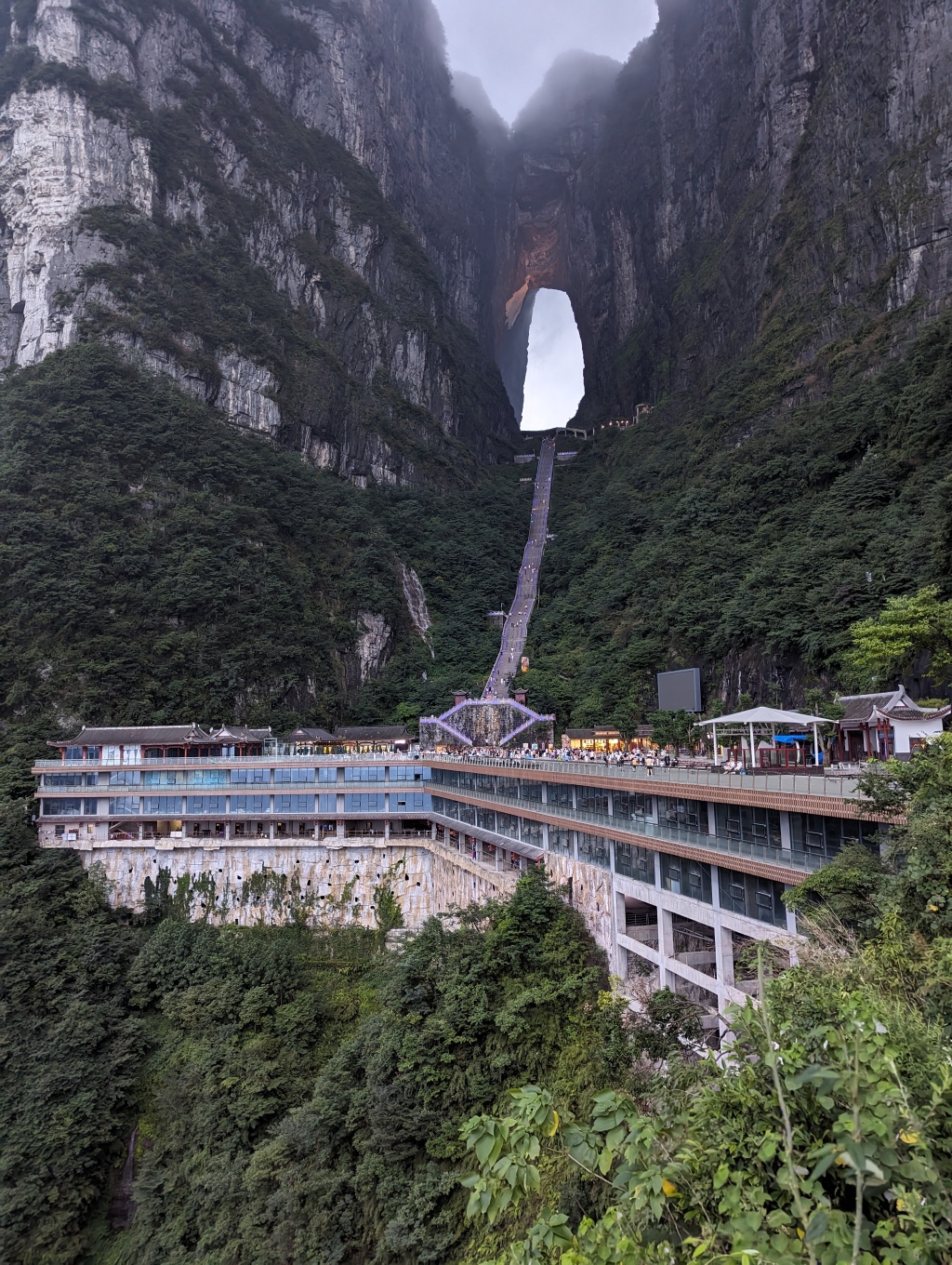Summertime is vacation time.

Summertime Sadness.
It’s alright, I found my way! I’m already more than used to the German trains anyway. My holidays start in beautiful Lausanne in the French-speaking part of Switzerland. Isn’t a peaceful retreat to the mountains a great way to recover from an exhausting year? Ph.D. application season wasn’t the most stress-free time of my life after all.

So there you go, Lausanne at Lake Geneva just by the mountains: that’s my destination!
By the way, have I mentioned that I’m going here as a topologist to the conference Young Topologists’ Meeting?
What is the Young Topologists Meeting?
The Young Topologists Meeting is a yearly conference organized by one of the four universities in Copenhagen, Lausanne, Münster, or Stockholm. This year’s event happened to be in Lausanne at EPFL and the point of the conference is to have a safe space for younger people – i.e. PhD students and a handful of postdocs and master’s students. Almost no intimidating big-name professors!
The mathematical content consists of two lecture series along with many contributed 30-minute talks by the participants in a low-pressure setting. At long last, there is a poster session, also contributed by the participants. The lectures this year were
- Topological Transforms for Statistical Shape Analysis by Kate Turner,
- Six functor formalisms and motivic homotopy theory by Marc Hoyois.
It’s an interesting concept that for this conference usually two strings of different audiences are invited. There are the pure topologists most of which work with hardcore homotopy theory and deal with ∞-categories every day but never even dare to think about the real world. On the other hand, the applied topologists work in topological data analysis (TDA), frequently get involved with statistics and seriously applied people like biologists but are freaking scared of ∞-categories.
Of course, I’m exaggerating here but you get the point.
This a priori seems like a good idea: the two sides crash and may form some meaningful relationships or have insightful conversations. But in reality, it might not work so well.
There are always two contributed talks at the same time, almost always one theoretical and one applied. Usually, the pure people just all go to the pure topology talk while the applied people go to the applied talk. There is simply more interest in the own field and it’s also easier to understand. I have not seen most applied people for almost the entire conference!
Could a better idea be splitting up the conference into two parts? A number of students were rejected for participation after all, simply because there were too many registrations.
Who knows. The idea is a cool one but it doesn’t really seem to work in real life. Maybe the problem rather lies in the implementation of the idea.
What mathy stuff did we do?
I did claim that this event was a vacation for me, but hear me out: I did do some meaningful mathematics and I did learn some new stuff that could be useful for my future career. And no: I’m not just writing this for potential future employers to read or in case my advisor accidentally lands on my blog!
The two lecture series differed starkly: There was a clear difference between the applied and the pure territory.
Kate’s lectures from an applied side were quite good! I really didn’t know what to expect going into it but finally, now I know what a persistence module is. These are the main objects in topological data analysis which are inspired by Morse theory ideas but also give a leeway of topology into statistics.
Anyhow, a persistence module is simply a functor with a totally ordered set
!
Alright, Kate did not formulate the definition this way but rather wrote out explicitly the data and properties of this functor. Personally (and all the pure people felt the same way), I would have preferred a more streamlined definition. It’s much more compact to write it out as a functor and everyone knows what the morphisms of persistence modules should be. There is no reason to artificially write it out – it’s simply a natural transformation.

The lack of categorical language already pestered me around the end of my bachelor’s at the TUM but I didn’t expect to find it at a conference for topologists. Every algebraic topologist knows what a functor is after all – we have all studied the fundamental group functor, homology functors, homological algebra, etc.!
It was actually a real surprise to me that she wasn’t sure whether the star goes up or down for pullbacks resp. pushforwards. But I suppose there really is a difference in proficiency in the language of category theory and this is a lesson that the language should not be taken for granted depending on the audience.
Anyway, Kate’s lectures were really quite nice and probably allowed everyone to get at least a glance into the theory. I did get confused with the myriad of metrics that were somewhen defined (which is relevant for what?) but nonetheless, it was a good lecture.
Marc’s lecture went in an entirely different direction. He fully abused the language of ∞-categories and took the viewpoint of cohomology theories being valued in spectra-valued ∞-sheaves. The language of six functors as a modern more formal way of describing certain cohomology theories has especially gained in popularity recently with Lucas Mann’s PhD thesis and also Peter Scholze’s lecture on the very topic.
Cool and fancy stuff for sure but the material might have been a lot. While Kate avoided the categorical language, Marc used (∞,2)-categories. Was everyone able to follow the material? I was definitely lost quite a bit.
The last lecture was fun: It was the first time that I sat through a lecture on motivic homotopy theory and so finally I have seen the definition of a motivic spectrum! Surely, it all went over my head a little bit and I have no idea why motivic spectra should be interesting but it seemed fancy and I’m excited to learn more about them!
The contributed talks varied in quality depending on the speaker and the topic. My main complaint is that almost every talk was done in the style of a slide presentation.

I’m not a fan of slide presentations for math talks. The speed is simply way too quick and if you miss or forget a single crucial definition and the slides vanish, then you will never get a possibility to recover.
One talk about motivic stuff was pretty cool but unfortunately, my mind decided to wander for 10 seconds the first crucial definition appeared. Then, the speaker went to the next slide and I was lost. It was a pity, this guy was a great speaker!
The Poster Session
The organizers encouraged the participants to apply for contributed talks or posters. A contribution leads to funding for the accommodation!
I originally applied for a talk but was told to present a poster. I’d have preferred giving a talk since I really like giving talks but this poster was a new experience that I actually quite enjoyed!

I presented the topic of my master’s thesis Fractured Structure on Condensed Anima and tried to explain the central definitions of my thesis: condensed mathematics and cohesive/ fractured ∞-topoi. It still irks me that I couldn’t manage to put in any meaningful pictures but that is simply so difficult for this topic and also I did not have any space left.
(Maybe I should have written that I have no anima left! OK, sorry for this stupid joke that is only understandable to homotopy theorists.)
The poster session itself was quite fun, a number of people came to me demanding an explanation of my poster. Most of the participants were not familiar with the concepts on it and so this was perhaps a first exposure to things like condensed math to them! Hence, I managed to spread the knowledge of condensed math into the world – I hope Peter Scholze is proud! I was surprised that even some of the fancy people like Maxime Ramzi came to my poster and wanted an explanation of fractured structures.

It was definitely a lot of fun!
Networking
Future employer or advisor, hear me out: I’m really doing something for my career! Networking, my lord.
You know, I’m a little shy and quite introverted, so interacting with humans drains quite a bit of my energy. I’ve got to know some new people and had interesting conversations, also with people more advanced in their careers who gave me some advice for networking.

These were interesting tips, e.g. ways to keep in touch with former supervisors. While it was fun and insightful, it did eventually leave me exhausted – especially since I was getting somewhat lousy sleep recently and was waking up quite early on. So I have to admit that I always hit the bed way too early on this conference.
Maybe not what I should have done but it is what I did.
Some Organizational Parts
It definitely didn’t help that I was in a room of 5 people!

Gosh, I was really quite bothered when I came to this realization. I was hoping for a single-person hotel room allowing me to rest properly at the end of the day but that was not to be.
In the end, it wasn’t too bad, my roommates were nice (at least the ones I’ve interacted with) but I would definitely have preferred a private room.
Let’s swap to a completely opposite time of day, namely lunchtime. I was hoping to get free lunch at the cantine as I was used to from the Masterclass in Copenhagen but even that was a wishful dream. We were just told to get lunch without any pointers to possible lunch places. On the first day, we were quite confused and paid 10 CHF for lousy cafeteria risotto. The next days we would go to the grocery store. This maybe could have been better conveyed but I guess also just my inexperience with conferences shows!
I shouldn’t complain so much, the organizers did a great job, thank you for a wonderful time!
Switzerland is too expensive
As is traditional, there was a conference dinner for which we went to Le Vaudois, a Swiss restaurant. While the food was OK, the overall experience was a bit of a letdown. The meal already wasn’t fully funded: Each of us had to pay 15 CHF! However, the heartbreaking part is that we did not even get any dessert! There is always dessert at these conference dinners, so when we eventually heard that no dessert was to be served, we were beyond disappointed.

I was also still hungry.
Some of us decided to go to an ice cream parlor to take desserts into our own hands. But when I saw the prices, I let my head handing and left the ice cream parlor again. 5€ per scoop?

Do I look like I’m rich?
I’m a young tourist!
Future employer, my advisor(s): Here it might be better if you stop reading!
The city was pretty, there was no question. It had a lake and was close to mountains, it would have to suck a lot to not be beautiful.
I did skip some talks to do some sightseeing (sorry, future employers, and advisors!!!) since a cultural appreciation of the city is simply part of the trip. Honestly, I feel like too many participants don’t even make use of their time at conferences. Some people don’t seem to even check out the city and then everything they will have seen would be the university. But come on, we’re in a different country, and conferences are often in noteworthy cities. Lausanne is a popular holiday destination and it’s not every day we get there.
In some free time before the conference dinner, two German students and I climbed the Notre Dame cathedral and were rewarded with this view!

On Thursday, I skipped the last two talks to have some time for sightseeing. I apologize but there were no talks that sounded interesting to me anyhow. Instead, I went up the Sauvabelin Tower and the view was definitely worth it. There is something about water and mountains that is just so beautiful.

Even though I did plan more time than others for tourism, I still couldn’t see everything I wanted. Perhaps the most popular tourist destination in Lausanne is the Olympic Museum and it really did look cool! But my train was parting in just one hour, so I didn’t have time to enter the museum. So sad! At least I already know where I have to go the next time I’m visiting EPFL.
So EPFL, hear me out: Please invite me to give a talk, there is a museum that I have to visit!



Leave a comment